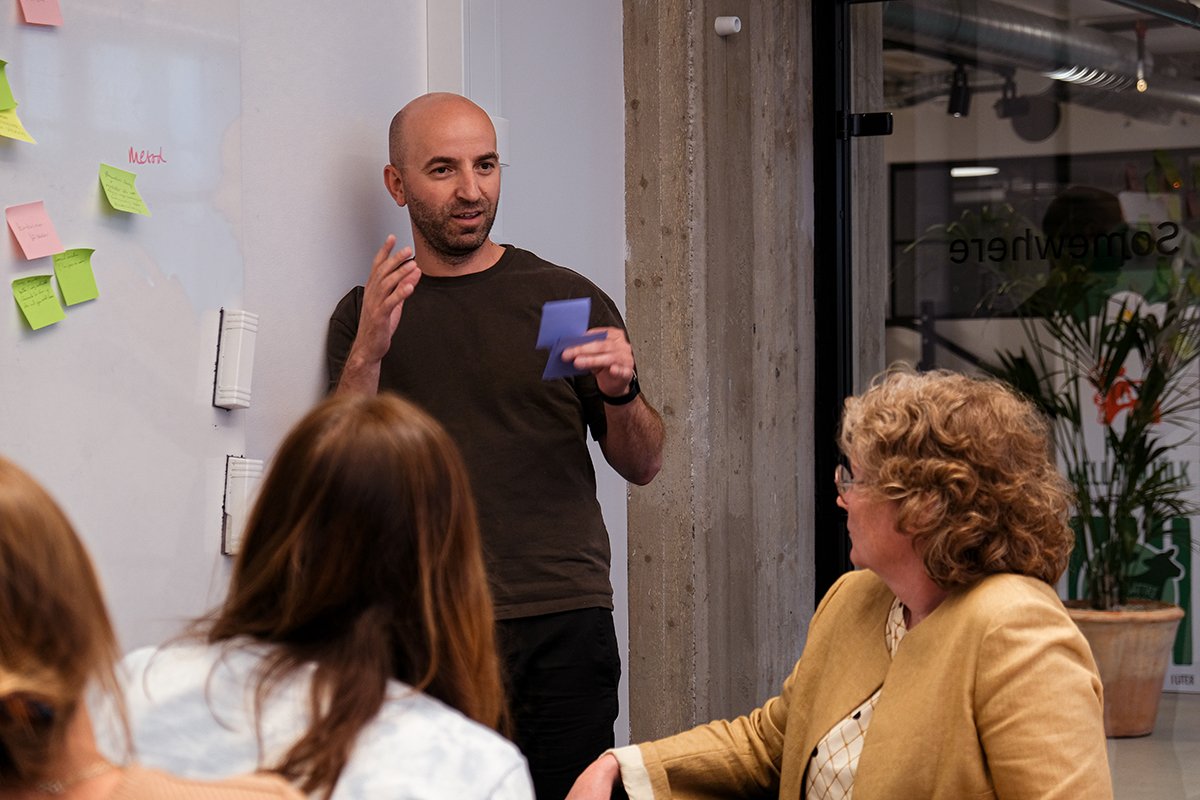Climate Leadership Roundtable #3: Transition Willingness
On May 24th, we hosted another Climate Leadership Roundtable – the 3rd in our series of action-oriented talks around green transition challenges.
We were joined by our science partners, Professor of Climate Economics, Åsa Löfgren (recently appointed University Fellow at Resources for the Future in Washington D.C.) and Sverker C. Jagers, Professor in Environmental Politics, as well as sustainability leaders Damien Isambert, Senior Sustainability Manager Nordics & Baltics at Danone, Nexhi Deti, Industry CTO & Sustainability Strategist at Microsoft and Eva Svedling, former CEO of think tank Global Utmaning and State Secretary for Climate at the Ministry of the Environment.
And of course, our very own – Staffan Ekholm, CEO, Lisa Stenvinkel, Head of Sustainable Impact and Ulrika Drougge, Transition Capability Catalyst.
In this session, we leveraged design thinking to identify and prioritise the most important enablers and blockers of corporate transition willingness. Willingness is one of the three fundamental areas within our TransitionView framework. It covers parts such as financing, leadership backing, and support, as well as internal clarity around and mandate of the green transition. Alongside the other two areas – Readiness and Openness – Willingness makes up what we refer to as corporate Transition Capability.
"We worked according to the triple helix model with representatives from private sector, public sector, and academy. The most interesting thing to me was that we all identified the same enablers and obstacles when reflecting on our biggest challenges. It became clear that we all see increased knowledge and financial incentives as key for enabling the green transition", says Åsa Löfgren.
So, what conclusions did the group reach?
The top 3 blockers for enhanced corporate Willingness:
Short-term profit focus – the board and CEO being more concerned with the quarterly report than having a long term sustainability strategy. Money comes first.
Lack of knowledge – the board and CEO not understanding the "sense of urgency” or the link between green transition and innovation
Misalignment – different groups and sectors have different views on where we are, what we’re facing, and what’s at stake. The different starting points makes it harder to unite around what needs to be done.
The top 3 enablers for enhanced corporate Willingness:
Financial incentives.
Desire for real impact – a level of genuine engagement and determination, sprung from a moral and knowledge-based commitment to transitioning.
Courage in leadership – Leaders demonstrating that it’s possible, and having the courage to be open about the challenges and how they plan to handle them.
As Åsa pointed out, critical knowledge and financial incentives were considered by all participants as the most important willingness factors, regardless of perspective or affiliation.
We see great commitment and interest among private and public sector leaders for collaboration and knowledge-exchange regarding the green transition, and will continue to host these dynamic Climate Leadership Roundtables going forward. Stay tuned!
If you are interested in joining future sessions, reach out to Lisa Stenvinkel, Head of Sustainable Impact at Another Tomorrow, to learn more about upcoming events.




